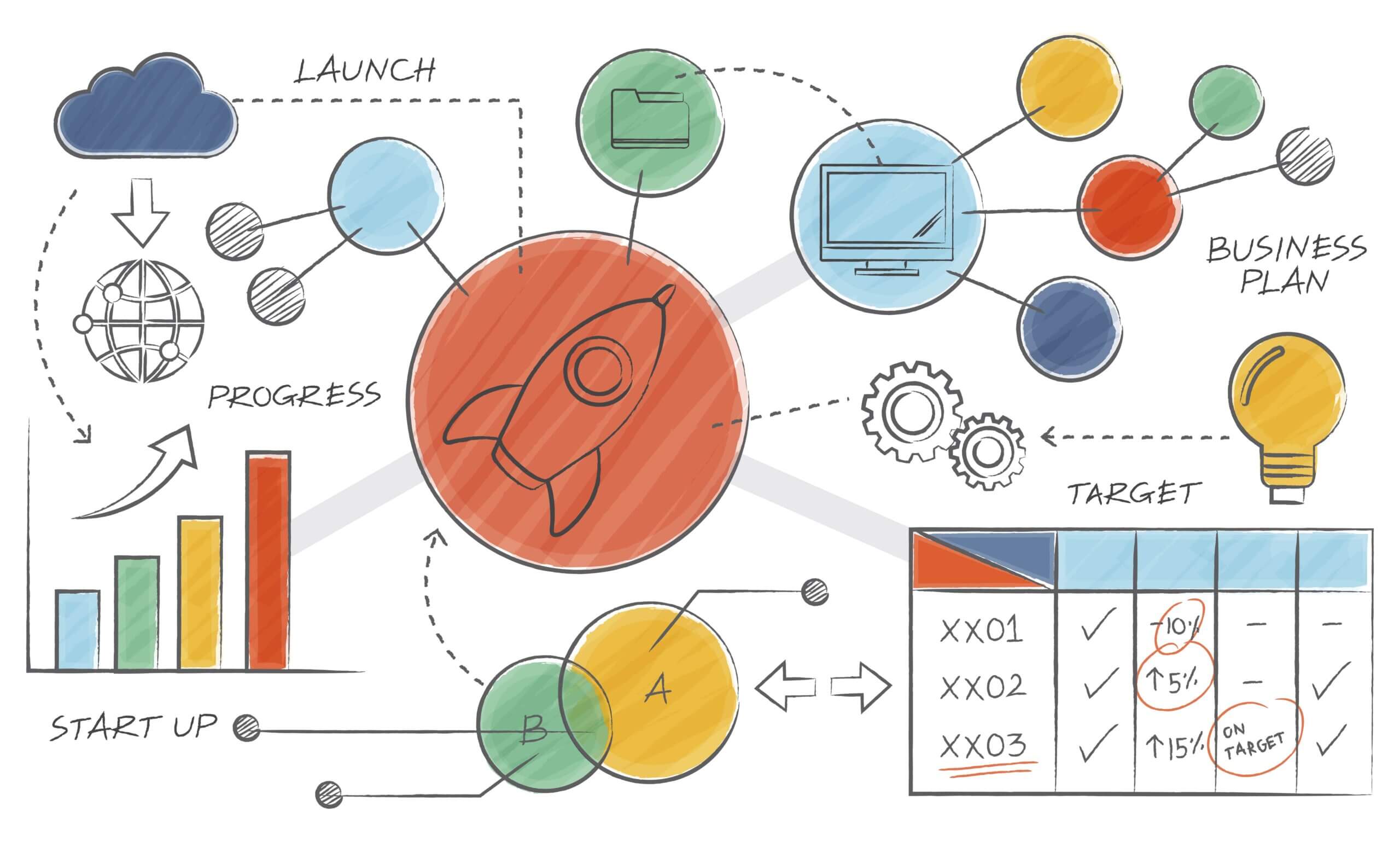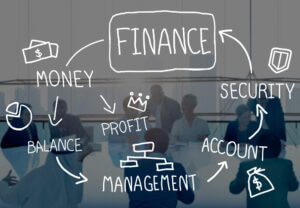Project management is concerned with the planning and organization of a project and its resources. This comprises defining and maintaining the lifecycle that will be utilized, applying it to the user-centered design process, forming the project team, and effectively guiding the team through all phases until the project is completed.
Areas within Project Management
The Project Management Institute (PMI) has identified nine areas of knowledge within project management:
1. Integration
Integration is the capacity to bring all you know together so that you can manage your project as a whole rather than as a collection of disconnected things. A fantastic approach to accomplish this is to use Project Service Automation (PSA) to access and control all of your project processes from a single location.
2. Scope
What your project will deliver is defined by its scope. As project manager, you must ensure that all stakeholders understand the project’s goal. This entails gathering requirements and creating a job breakdown structure. The more precisely you describe your scope, the more clearly everyone understands what the project is expected to deliver.
3. Time
How is the time being spent by you and your group? Does it further the project or takes something away from it? Any competent project manager must be proficient in time management. Details about the benefits of time tracking and its implementation can be found in the time knowledge area. Maintaining track of task completion times and total project duration is critical. Completing projects within scheduled timeframes is made possible by setting realistic deadlines based on work duration.
4. Cost
The goal is to complete your project on schedule and under budget. Therefore, managing the project’s funds is essential. This subject area covers project budget forecasting as well as estimating the cost of individual tasks.
5. Quality
For a project to satisfy your clients, it must adhere to certain requirements. Setting the standards for quality control and quality management for your project is covered here. This instills confidence in you to complete your assignment in a manner that meets the needs of your client.
6. Procurement
Do your supply and resources minimize waste and provide value? You are aware of how to manage suppliers, organize your resources, determine what needs to be purchased, manage tenders and purchases, and close vendor contracts after the project is completed.
7. Human resources
You must first determine what human resources are required to finish your project successfully before you can assemble a team. After assembling the ideal group, you must oversee it. It’s also critical to keep pushing your resources to develop the abilities required to cross the finish line.
8. Communications
The foundation of every project is communication. It is the project manager’s duty to update all parties involved on the project’s status and any obstacles.
9. Risk management
Project risk identification and assessment are part of this knowledge domain. It is beneficial to know how to do both qualitative and quantitative risk assessments. With this understanding, you can see or anticipate possible dangers and take action to avert them.
10. Stakeholder management
The final group helps you identify stakeholders and comprehend their demands and roles in the project. Equipped with this understanding, you can guide your group in meeting those demands.
Project Constraints
- Time constraint: It consists of the project’s completion timeline, due dates, monitoring, planning, control, delivery date, and overall quality.
- Scope constraint: A project’s scope or end goal ought to be understood. It entails precise specifications, documentation, evaluation, approval, rejection, and project-related communication.
- Cost constraint: A project has numerous fixed and variable costs. Materials, licenses, labor, resources, information, and financial effects are all involved.
- Risk constraint: A project needs to be ready for any possible outcome. It ought to be capable of overcoming every danger. It requires all of the major bravery and care needed to make sure it succeeds.
- Benefit constraint: It is important to know the areas in which a project will succeed before beginning. It has to do with changes, losses, damages, or growing expenses.
- Quality constraint: In every project, quality is the ultimate goal. This regulates how other limitations increase and decrease. This forms a project’s fundamental framework and has a substantial influence on its final result.
Project Lifecycle
The term “project lifecycle” refers to the set of phases that a project goes through. Included are the following phases: initiation, planning, execution, monitoring and controlling, and closing.
Referene : medium.com article

- Initiation: The project lifecycle’s initial phase is this one. It is at this point when a project’s value is measured. It consists of records, potential estimates, financial advantages, research, and objectives.
- Planning: A project needs to be directed by a well-thought-out strategy or set of rules. its detriments, alterations, harms, or growing expenses. It provides guidance on generating high-quality results, managing risk, fostering acceptance, and conveying advantages.
- Execution: This is the step where project management is involved. Implementation depends on the planning stage. The project plan serves as the basis for the work and efforts made during the implementation phase. This is the product of the planning phase of the project.
- Monitoring and control: In a project, this phase examines how a plan has been carried out. Project management is governed by this. This is the driving force behind a project’s continuous progress.
- Closure:When a project’s outcome or result is delivered, it is considered closed. This enables the project to be evaluated and documented before moving on to the next.
PRINCE2
PRINCE2 is a project management approach that focuses on structure and control. The abbreviation PRINCE stands for “PRojects IN Controlled Environments.” This project management paradigm is linear and process-oriented, with a focus on moving initiatives through adopted business cases.
Project Management | PMI
All projects are a temporary effort to create value through a unique product, service or result. All projects have a beginning and an end. They have a team, a budget, a schedule and a set of expectations the team needs to meet.
IPMA
A project is a unique, temporary, multidisciplinary and organised endeavour to realise agreed deliverables within predefined requirements and constraints.
ISO 21500
ISO 21500 defines a Project as “a unique set of processes consisting of coordinated and controlled activities with start and finish dates, undertaken to achieve an objective.”
What is the project management triangle?
The three components of the project management triangle—scope, cost, and time—determine the project’s quality.
Scope : The project scope, which is a list of particular tasks, projects, objectives, deliverables, and dates, is a component of the project plan.
Cost : Every project is given a specific amount of money, known as the budget. This sum of money is needed to finish the project. The cost of the project may involve paying the personnel, purchasing tools and equipment, leasing office space, and other resources.
Time : Time is the amount of time needed to finish both the project and its individual jobs within it. Another name for the time restriction is the timetable. Timelines may be extended by a smaller budget or a larger scope.

Image Reference : https://interqualitybg.com/en/resources/project-management
Project Management Methodologies
All project management approaches are driven by two main organizational philosophies: waterfall (or linear) and agile (or iterative).
Waterfall
The waterfall model is a classic, linear project management approach that was created in the 1950s. The model normally consists of five or six discrete stages, each of which is reliant on the deliverables of the preceding phase. You must finish each before moving on to the next.
Lean
Lean project management, which was established by Toyota for auto manufacturing, is focused on delivering value while eliminating waste, which it categorizes into three categories by their Japanese names:
- Muda: wasted time, resources or effort that don’t add value for the end user
- Mura: overproduction and excess inventory accumulated through an irregular workflow
- Muri: overburdening of employees at any stage of a workflow
Kanban
Kanban is a lean project management strategy that provides a visual perspective of the process from start to end, which aids in workflow management by displaying who is working on what and where resources are most required.
Agile
Agile project management strategies developed in opposition to the waterfall model’s rigidity, and were inspired by the speed and flexibility of lean methods. They are iterative and collaborative by design, and they prioritize generating good products for customers.
Scrum
A scrum framework, designed for small teams, leads a straightforward process of communication, planning, execution, and feedback.
Scrum teams operate in “sprints” of two to four weeks. The team plans the sprint’s goals and decides on deliverables to fulfill during that time. The team meets everyday for a 15-minute “scrum” or “stand up,” during which each team member communicates progress and roadblocks toward the goal.
Each sprint, the team conducts a more extensive meeting for sprint review to present finished work and get feedback and suggestions for future work.
Scrumban
Scrumban is a combination of Kanban and Scrum techniques. It displays work on a Kanban board with three columns—To Do, Doing, and Done—and adheres to a scrum process. Team members are not allotted a backlog of work; instead, they pull things from To Do as they have bandwidth, preventing them from being overloaded.
Extreme Programming (XP)
The method works best in teams when programmers and stakeholders are in sync, as the absence of formal documentation and control increases the possibility of misunderstandings and unending adjustments.
Crystal Method
Crystal is an agile methodology that prioritizes people and their relationships over procedures and instruments. It enables teams to customize and optimize their operations for each project.
Hybrid Aka Structured Agile
Hybrid methodologies take the best of both waterfall and agile philosophies to create a structured yet flexible workflow.
Dynamic Systems Development Method (DSDM)
DSDM is a hybrid technique that is the most structured among the agile approaches. It was created to provide unstructured approaches more discipline while keeping agile’s adaptability.
SMART in Project Management
It may be overwhelming to know where to start and how to effectively communicate your organization’s desire in order to achieve good results when it comes to goal setting, whether it be team-based or individual.
George Doran, Arthur Miller, and James Cunningham developed the goal planning framework known as SMART in the early 1980s for use in project management.
The methodology was introduced by Doran in a landmark paper titled “There’s an S.M.A.R.T. way to write management goals and objectives” that appeared in the Management Review in 1981.
MART has gained popularity throughout time as a goal-setting tool for project management, successful leadership, and personal growth.
The acronym SMART lists five crucial factors that should be considered while establishing goals and project objectives. The concept is that, in order for a project aim to be successful, it must meet the SMART criteria. As a result, each goal for a project should be planned to be:
- Specific: The objective should be to enhance an area in particular or to meet a specific demand.
- Measurable: The objective must be measurable, or at the very least, allow for verifiable development.
- Attainable or Achievable: The objective need to be reasonable in considering the resources at hand and existing circumstances.
- Relevant or Relative : For the objective to be deemed valuable, it must be in line with other business objectives.
- Time-bound: There must be a deadline or clear finish for the objective.




